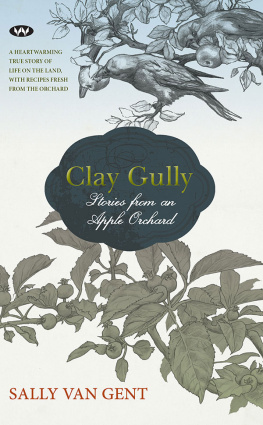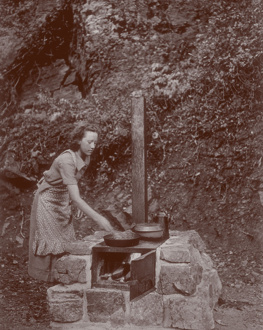


DUTCH FEAST
Copyright 2017 by Emily Wight
All rights reserved. No part of this book may be reproduced in any part by any meansgraphic, electronic, or mechanicalwithout the prior written permission of the publisher, except by a reviewer, who may use brief excerpts in a review, or in the case of photocopying in Canada, a license from Access Copyright.
ARSENAL PULP PRESS
Suite 202211 East Georgia St.
Vancouver, BC V6A 1Z6
Canada
arsenalpulp.com
The publisher gratefully acknowledges the support of the Government of Canada, and the Government of British Columbia (through the Book Publishing Tax Credit Program), for its publishing activities.

The author and publisher assert that the information contained in this book is true and complete to the best of their knowledge. All recommendations are made without the guarantee on the part of the author and publisher. The author and publisher disclaim any liability in connection with the use of this information. For more information, contact the publisher.
Note for our UK readers: measurements for non-liquids are for volume, not weight.
Design by Oliver McPartlin
Interior and cover food photographs by Tracey Kusiewicz/Foodie Photography
Additional photography by Daria Yakovleva (p.193, 233, 239) and Leon Woods (p.237)
Edited by Susan Safyan
Library and Archives Canada Cataloguing in Publication:
Wight, Emily, 1983-, author
Dutch feast / Emily Wight.
Issued in print and electronic formats.
ISBN 978-1-55152-688-1 (ebook)
1. Cooking, Dutch. 2. Cookbooks. I. Title.
TX723.5.N4W53 2017 641.59492 C2017-904035-9
C2017-904036-7

To Hunter and Hudson: Never turn down an offer of food or the opportunity to travel. Youll never regret wandering off in search of snacks and adventure, though you may regret inviting me to go with you.
CONTENTS
Table of Contents
Guide

If you dont know much about Dutch cuisine, it might be easy to assume that there is not much to it. If youve only been to Amsterdam, for example, you might guess that the primary dishes of the Netherlands are French fries and mayonnaise or bitterballen and mustard. Perhaps if you grew up in a Dutch household with diasporic parents, your association with Dutch food may be the boiled mushes and stewed meats or sausages that make up an infinite variety of stamppots, potato-based dishes of mashed veggies meant to serve as the basis for an infinite variety of stewed, fried, or tube meats. You might even be forgiven for thinking that it is a lot like British foodbland, boiled, occasionally deep-fried, and thats about it.
I promise you, even when it is boiled and/or deep-fried, that is not all there is to it. (Which is not to minimize the Dutch affinity for boiling and mashing things; boiled mushes are a fundamental part of Dutch cuisine, but they are nourishing and delicious and often oozing with butter and/or gravysee Stamppots, .)
The Netherlands is comprised of twelve provinces and borders Germany and Belgium (the United Kingdom is across the water, and France not too far away). At various points in history, the British and the French have beenor have viewed the Dutch asantagonists. The northern Dutch, in the area known as Friesland, claimand history supports thisthat English and Friese are related dialects; Friese and Old English share similar-sounding words that look quite different from other Germanic dialects.

Additionally, there are three special municipalities: Bonaire, Sint Eustatius, and Saba, which are part of the Netherlands proper and participate in Dutch and European elections despite being located in the Caribbeanthey are regarded in much the same way as any municipality on the mainland, though they do not comprise their own distinct province. In addition, the Kingdom of the Netherlands also includes the Caribbean islands of Aruba, Curaao, and Sint Maarten, which are independently governed but still economically tied to the Netherlands proper. Prior to the end of their colonial period, the Dutch also occupied Indonesia, Suriname, Brazil, Sri Lanka, India, and parts of Africa, though they were not always successful in maintaining their holdings against the British, Portuguese, and Spanish. Early migrants to North America established New Netherland in what are now the mid-Atlantic States of New York, New Jersey, Delaware, and Connecticut; their presence in the area established what would later become essential elements of American culture and cuisine, including coleslaw, pancakes, doughnuts, and apple pie.
The Dutch culinary tradition is very diverse, and whatever you might think of Dutch food today, Dutch people have always enjoyed good quality local ingredients, often prepared simply. They benefit from a temperate, coastal climate, a diverse variety of agricultural products, and a commercial greenhouse industry that produces fruits and vegetables year-round. Meat, dairy products, and fish are abundant. There is so much breadand it is such good bread.
Sweets and pastries are important to Dutch cuisine and are not necessarily dessert; often, a piece of vlaai (tart) is served with coffee in the middle of the day. Pies and tarts are not too sweet and quite sturdyoften served with a generous dollop (okay, a heap) of whipped cream. Whipped cream appears as a dessert topping more frequently than ice cream, and it is a very good quality, high-fat cream that melts slowly into the crevices of hot desserts or is spooned off warm chocolademelk like pudding. Cookies are often crisp and firm, meant to stand up to a hot cup of coffee. In the evening, a Dutch family might enjoy vla, a fresh, dairy-based pudding, poured from a carton kept in the refrigerator.
Dutch cooking is commonly defined by thriftiness and practicality, and while often hearty and rich with butter and cheese, it is nourishing and healthful. It relies on inexpensive ingredients that are widely availableapples, potatoes, Belgian and curly endive, onions, and kale feature prominentlywith interesting combinations of spices and flavorings to add character and taste. It is a cuisine influenced by its colonial history, with bold flavors coming from places like Indonesia and Suriname, and by its proximity to its neighbors, especially Belgium. Flavor preferences often lean sweet and salty, and common spices include nutmeg, anise, and coriander. Historically, a delicate hand with flavors such as rose water, vanilla, and saffron have lent an air of sophistication to otherwise simple dishes.



















